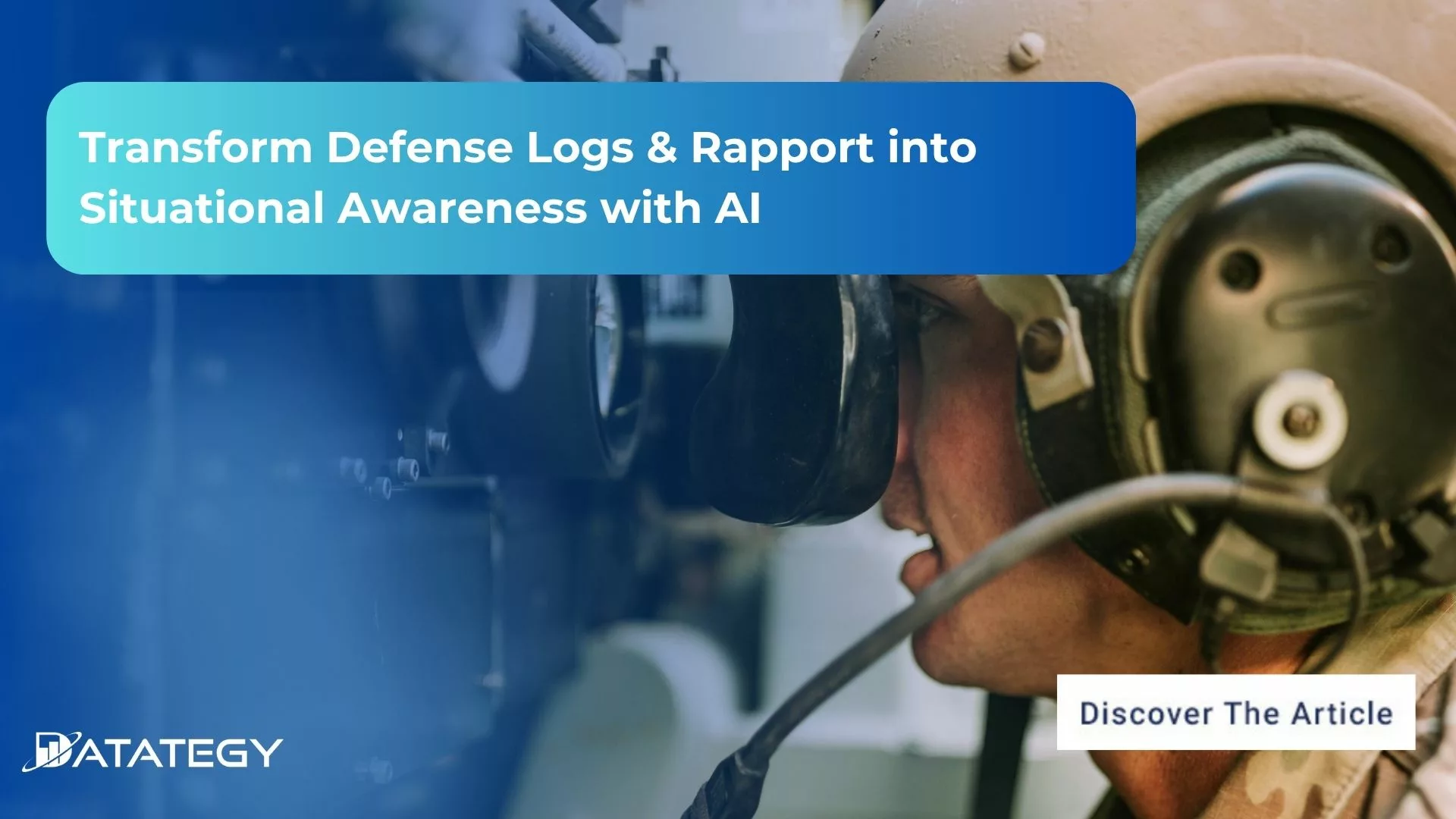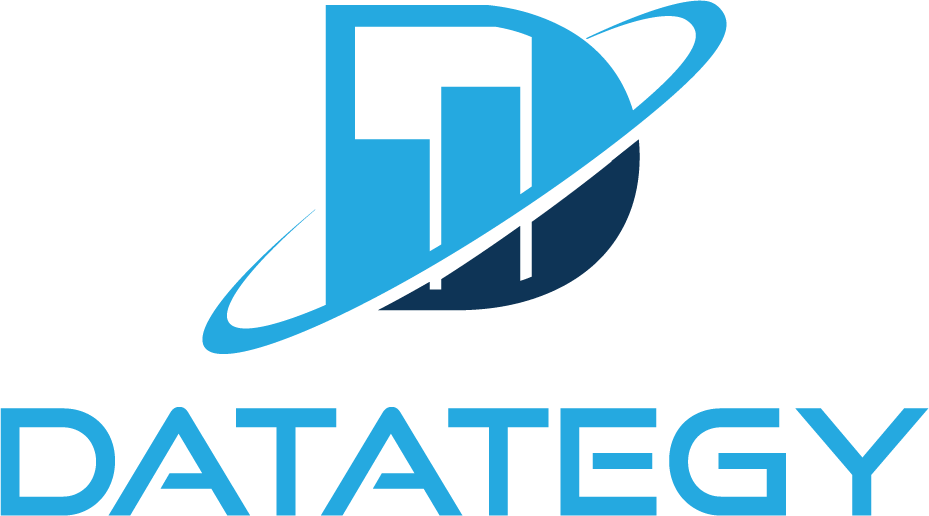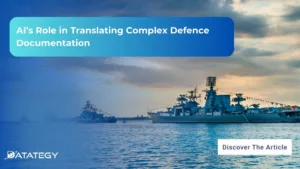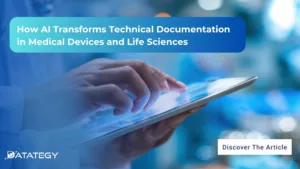We Don’t Just Build AI, We Deliver Measurable Impact Join...
Read MoreTransform Defense Logs & Rapport into Situational Awareness with AI
Table of Contents
ToggleIn today’s rapidly evolving world, the landscape of defense and warfare is undergoing a profound transformation, largely driven by the incredible advancements in Artificial Intelligence. It’s no longer a concept confined to science fiction; AI is actively reshaping how nations approach security, strategy, and operations.
The crucial idea of situational awareness is at the core of this change. Consider attempting to negotiate a challenging, high-stakes situation when information is overwhelming, fragmented, and changing quickly. Commanders in conventional combat relied on scant intelligence, frequently assembling information from several sources and dealing with delays. Conflicts nowadays, however, are different.
They require a quick, thorough grasp of “what’s happening, where, and why” in large, dynamic contexts. They are also faster and more integrated. Knowing the location of your forces is only one aspect of this; you also need to be able to foresee threats, comprehend the aims of the adversary, and quickly adjust to changing conditions.
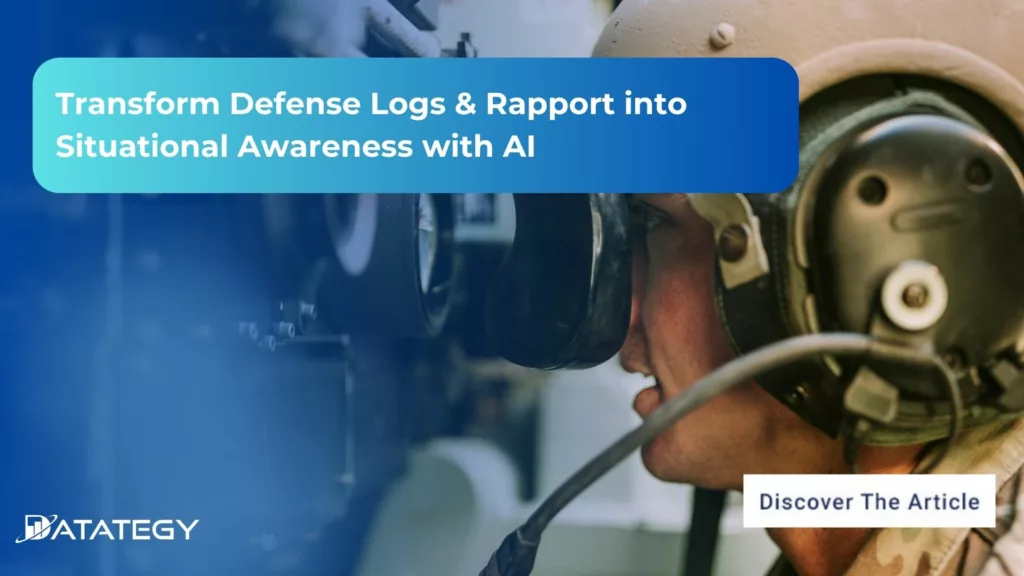
The AI‑enabled surveillance and situational awareness market reached $1.26 billion in 2024, expected to grow to $2.73 billion by 2030 at a CAGR of 13.9%. (Source).
What does Situational Awareness means in Defense?
Situational awareness is the capacity to see, comprehend, and predict events in your surroundings so that you can act swiftly and decisively. It involves knowing exactly “what is happening, where it’s happening, and why” at any given time in terms of defense and security. This entails gathering, evaluating, and transforming enormous volumes of data from many sources, such as logs, reports, sensor feeds, or field intelligence, into useful insights. In order to recognise threats, evaluate risks, and react appropriately under duress, operations and security analysts need to be situationally aware.
Achieving full situational awareness is more difficult than ever in the modern world due to the volume and complexity of information. Unstructured reports, real-time updates, and fragmented data can overload analysts and cause them to put off making decisions. This is where cutting-edge tools like AI and NLP are useful for effectively processing and organising data.

In defense, situational awareness is more than just data visibility, it’s the ability to reconstruct critical events, understand complex dynamics, and anticipate risks with precision. We empower analysts to move from fragmented information to clear, actionable insights
Jean-Marc Briquet
Global Sales Director
Why “what, where, and why” matters in Defense
1- Enables quick and efficient decision-making in situations with significant stakes
In any fast-paced or delicate situation, the key to making effective decisions is quickly understanding what happened, where it happened, and why. Suppose an incident occurs on the ground: communication channels hum with fragmented information, sensor data updates, and field reports come in.
The time is of the essence, and erroneous or postponed assumptions might have practical repercussions, ranging from endangering workers to jeopardising operations. Leaders and analysts can quickly and clearly grasp the important data, evaluate the size and breadth of the crisis, and set priorities right away.
Teams are able to eliminate dangers, reroute resources, and modify strategies quickly when situational clarity is attained in minutes as opposed to hours. On the other hand, any hesitancy or misunderstanding may result in poor reaction, misaligned tactics, or even lost opportunities to prevent escalation. The capacity to quickly analyse “what, where, and why” is not only crucial, but it may also be mission-defining and even life-saving, especially in defense scenarios where enemies may take advantage of sluggish or ill-informed replies.
Datategy experts found that AI-powered systems can improve situational clarity by up to 80%, enabling faster and more confident decision-making in critical operations.
2- Move from fragmented data to guide operational coordination
In crisis situations, data rarely arrives in a logical, ordered format. Rather, analysts have to deal with a variety of asynchronously arriving logs, sensor feeds, email threads, reports, and eyewitness testimonies. This patchwork of disparate inputs is little more than jigsaw pieces without a picture if there is no speed. However, when analysts quickly organise this data around the fundamental issues of what happened, where it happened, and why, they create a cohesive story that directs all parties to take coordinated action.
Decision-makers, command centres, and field units may all communicate more effectively because of this narrative-driven clarity. Every team uses the same situational blueprint while planning a tactical strike, protecting a perimeter, or starting a crisis management procedure. Effective after-action reporting is also fueled by rapid comprehension, which lowers the possibility of misunderstandings, avoids duplication of effort, and guarantees that follow-up measures focus on addressing the underlying causes rather than the symptoms. To put it succinctly, it turns disorganised, compartmentalised data into planned, strategic action.
AI-driven data fusion in defense logistics cut supply chain delays by up to 65%, enabling coordinated, timely mission support.
3- Allows proactive risk evaluation
Responding to a crisis is one thing; anticipating one, or at least its next stage, is quite another. The foundation for predictive insight is laid by providing prompt answers to the “what, where, and why” questions. Analysts can evaluate both present and potential risks if they understand the course of events and identify underlying patterns or triggers. An early warning is produced, for example, if a particular spot frequently turns into a flashpoint or if a particular series of occurrences suggests a possible escalation.
Teams are empowered to deploy forces, modify strategies, or put preventative measures in place in advance thanks to these anticipatory capabilities. You go from simply responding to influencing results. Decision advantage in defense operations is found in that transition from responsiveness to proactivity, which enables commanders to take the initiative, thwart threats before they become real, and ultimately preserve operational superiority. Rapid comprehension of “what, where, and why” opens the door to not only effective reactions but also to controlling the situation’s narrative and outcome.
What are the key Components of Situational Awareness in the Defense industry
1- Detecting and Gathering Critical Information
Perception is the first and most essential element of situational awareness. Perception in the defense sector refers to the real-time collection and detection of pertinent data from many sources. This comprises operating system logs, ground-based personnel reports, satellite photos, intelligence feeds, and, in contemporary hybrid warfare scenarios, even social media signals. However, perception is more than just seeing or gathering; it’s also about making sure that no important detail is missed in sometimes chaotic and data-rich surroundings.
2- Comprehension of Current Situations
In order to complete this stage, analysts must organise and combine disparate, unstructured data into logical narratives. Classification algorithms and natural language processing (NLP) techniques are crucial in this situation. From textual reports or correspondence, they are able to extract entities, places, times, and attitudes. Instead of forcing teams to sort through mountains of raw data, aggregation capabilities allow analysts to see data by entity, geography, or sequence, facilitating the generation of actionable insights. Understanding turns “data noise” into situational clarity, which is necessary for coordinating resources, evaluating risks, and formulating a successful response.
3- Anticipating Risks and Outcomes
For instance, defense forces must not only respond to minor incidents that occur in a theatre of operations but also predict how they could escalate into a larger conflict if a string of such episodes indicates that tensions are rising. This element is improved by AI techniques, which reveal hidden connections in historical occurrences and offer plausible scenarios. Defense teams can gain important lead time by using pattern-matching algorithms to identify early warning signs of recurring problems or enemy tactics. Situational awareness’s forward-looking component helps teams become more proactive rather than reactive, which is a huge benefit in high-stakes defense operations.
4- Decision and Action
The final and possibly most crucial component of situational awareness is turning understanding into action. Perceiving, understanding, and projecting are insufficient; defense teams also need to act quickly and decisively to resolve the issue. In order to eliminate dangers or seize opportunities, this stage entails deciding on the best course of action, allocating resources across several units, and swiftly putting the response into action.
Which type of military categories can benefit from situational awareness?
1-Command and Control Centers
The command and control (C2) infrastructure, where commanders and strategists make crucial choices based on available intelligence, is at the centre of any military action. Because these centres have to synthesise vast amounts of data in real time, from satellite imagery and intelligence briefings to field reports and surveillance feeds, situational awareness is crucial. C2 teams run the danger of delays, misunderstandings, or poor tactics that could jeopardise missions if they don’t have a clear operational picture.
C2 units can precisely reconstruct events as they happen thanks to platforms like papAI. Through the use of entity aggregation, pattern recognition, and natural language processing (NLP), they are able to condense thousands of disparate inputs into a single, cohesive picture of what is happening, where it is happening, and why it matters. Coordination across several operational theatres, resource allocation, and strategy planning are all aided by this clarity.
For example, a unified situational awareness aids commanders in anticipating enemy movements and efficiently coordinating responses during multi-domain confrontations encompassing land, sea, air, and cyber operations. The capacity to act confidently due to strong situational awareness is a clear benefit in high-pressure scenarios where every second matters.
2- Field Units and Tactical Teams
Field units and tactical teams need situational awareness to survive and succeed on the ground, while strategic leaders need it for high-level choices. These are the teams that are actively involved in tasks, such as securing areas, conducting reconnaissance, or confronting adversary forces. Because of the dynamic and frequently unpredictable nature of their surroundings, being aware of risks and possibilities in real time is essential.
Tactical teams can obtain a constantly updated view of their immediate environment and the larger operational context by utilising AI-driven situational awareness tools. Location- and time-aggregated data can display events in the area, enemy and allied force movements, or possible dangers. This enables units to optimise their paths and actions, avoid ambushes, and make dynamic tactical adjustments.
In order to improve the shared operating picture for all stakeholders, collaborative features also enable field units to submit real-time updates back into the system. When a patrol notices unexpected activity, for instance, they can annotate and send the observation in real time, providing vital new information to other units and command centres.
3- Units for Intelligence and Reconnaissance
In order to support operational planning, military intelligence and reconnaissance units are entrusted with gathering, evaluating, and interpreting data from various sources. More than merely gathering data is necessary for their success; they also need to be able to spot trends, spot abnormalities, and predict the tactics of their enemies. Here, situational awareness refers to transforming unprocessed data into useful intelligence that foresees possible dangers before they become real.
This capability is improved by tools like as papAI, which use anomaly detection and pattern matching. These characteristics can be used by intelligence analysts to assess risk levels, find hidden correlations in operations histories, and identify new danger patterns. For example, papAI can assist in identifying a possible ambush staging place if reconnaissance drones detect unusual movement close to a supply line. Military strategists can take preventative measures by reallocating resources or strengthening weak areas thanks to these information. Situational awareness in intelligence work guarantees that choices are based on a thorough comprehension of intricate operational contexts rather than on disjointed or out-of-date information.
4- Logistics and Support Commands
Situational awareness is as important for logistics and support units, which are sometimes disregarded when talking about military advantage. They must have a precise grasp of situations across several locations and operational layers because of their involvement in ensuring supply chains, equipment readiness, and troop movements. Entire missions can be jeopardised by logistical disruptions brought on by hostile activity, environmental conditions, or resource mismanagement.
Logistics personnel can clearly see where resources are most needed, where vulnerabilities exist, and how to adjust when faced with unforeseen obstacles thanks to situational awareness. For instance, planners can effectively manage delivery schedules, anticipate any bottlenecks, and monitor supply lines because to papAI’s capacity to aggregate data by location and sequence. Logistics commanders can prioritise repairs, reroute supplies, and support frontline forces under pressure with the use of real-time information into the condition of infrastructure and assets. Logistics teams can guarantee operational continuity, cut down on waste, and keep vital materials flowing even in disputed areas with increased awareness.
How to choose the right platform?
Technical capabilities and operational requirements must be clearly understood in order to select the best platform for addressing situational awareness in defense. Large, complicated, and frequently unstructured datasets, such as mission logs, field reports, and real-time sensor feeds, should be handled by the perfect solution while maintaining speed and accuracy in analysis.
Seek out systems that incorporate cutting-edge technology such as pattern recognition to identify important sequences, data aggregation to produce logical views by entities, places, and timelines, and natural language processing (NLP) for text analysis. Supporting cooperative workflows is equally crucial for analysts and decision-makers from different divisions to exchange ideas, annotate results, and keep a single operational picture.
Sovereignty and traceability are non-negotiable in defense when sensitive data is involved. Strong controls to regulate data access, guarantee adherence to military rules, and enable complete audit trails for accountability should all be included in the platform. Whether for smaller, tactical deployments or large-scale multi-domain operations, scalability and agility are also crucial.
Leading the data revolution: CDO role in today's organizations
The need for CDOs is expanding as a result of the growing significance of data in today’s corporate environment. Any organization’s success depends on the CDO, who is the primary force behind digital innovation and change.

Streamlining AI with papAI: Key Benefits and Features
papAI is a scalable, modular, and automated AI platform designed for end-to-end ML lifecycle management, seamlessly integrating with existing infrastructures.
Businesses may use papAI solutions to industrialize and execute AI and data science projects. It is collaborative by nature and was created to support cooperation on a single platform. The platform’s interface makes it possible for teams to collaborate on challenging tasks.
Several machine learning approaches, model deployment choices, data exploration and visualization tools, data cleaning, and pre-processing capabilities are a few of these features.
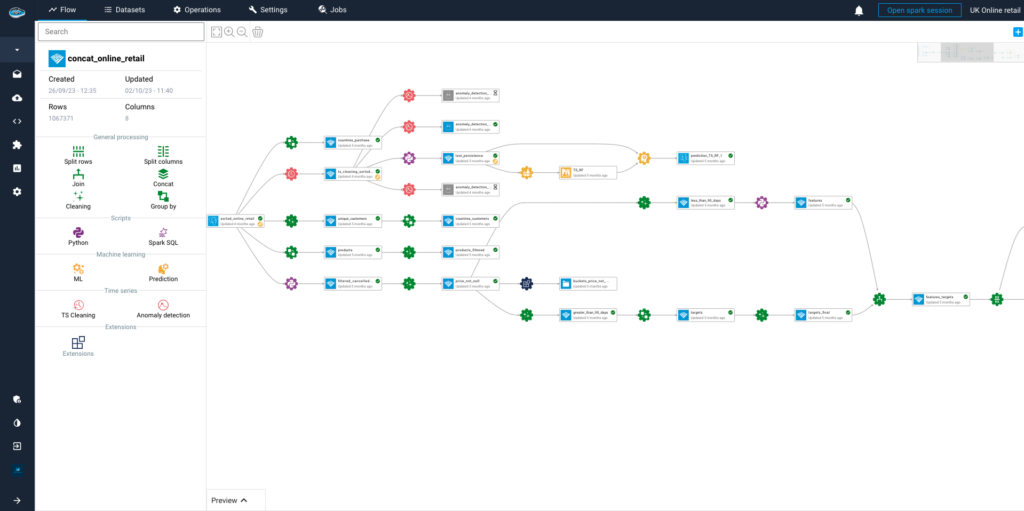
Here’s an in-depth look at the key features and advantages of this innovative solution:
1- Natural Language Processing (NLP) for Unstructured Data
Field reports, mission logs, intelligence briefings, and even intercepted communications are examples of unstructured data that include enormous volumes of information that are crucial to defense operations. Although this data is full of important facts, analysts find it difficult to interpret it rapidly due to its lack of organisation, particularly when they are under time constraint. To address this issue, papAI makes use of Natural Language Processing (NLP). NLP serves as a link between unprocessed text and useful information.
The NLP modules from papAI are made to understand the intricate, domain-specific language used in defense settings. They are able to extract important information from narrative reports, including names of persons, dates, locations, and equipment references. In addition to extraction, NLP examines the relationships and context of these entities to create a coherent picture of what happened.
For instance, it might identify a sequence in a sensitive operation as a turning point in the event where certain troops were redeployed in response to new threats. An important benefit in coalition or international operations is the system’s ability to handle noisy and multilingual data sources. PapAI guarantees that no important detail is overlooked, speeds up sense-making, and decreases analyst workload by converting unstructured text into structured insights.
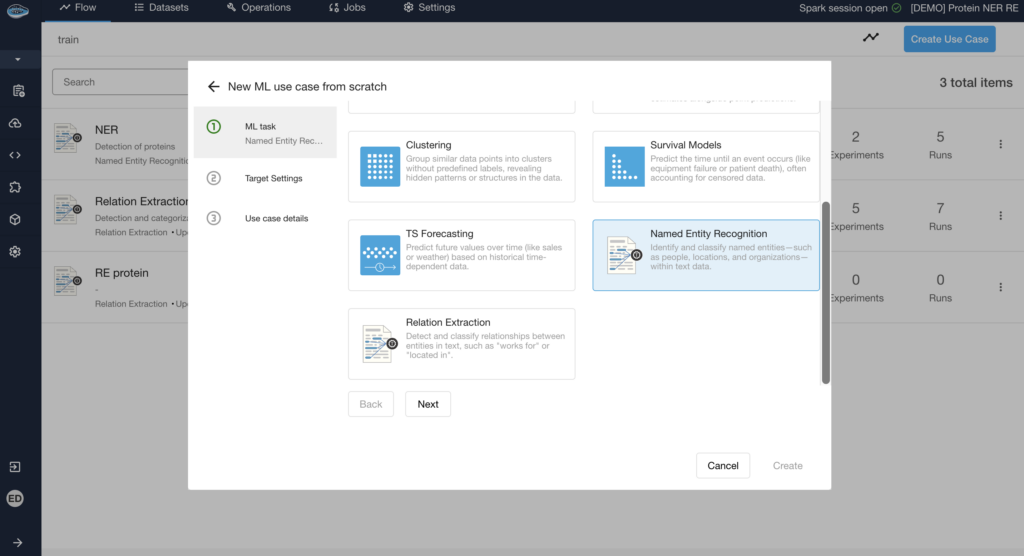
NER/RE machine learning tasks
2- Advanced Classification and Entity Recognition
Making sense of the data is the next step once it has been extracted from unstructured sources. papAI uses entity recognition and classification methods to classify data into relevant groups. For defense analysts, who must sift through large datasets in order to spot trends, evaluate threats, and rank responses, this is crucial.
papAI can recognise and classify important actors, items, and locations in datasets thanks to entity recognition. It can differentiate, for example, between military and civilian assets or between friendly, neutral, and antagonistic forces. Data points are subsequently grouped by classification algorithms into pertinent categories, such as operational domain, incident type, or severity level. When combined, these features allow analysts to effectively search and filter data, removing noise and concentrating on important information.
Defense teams may transition from a reactive to a proactive posture thanks to this structured approach, which also facilitates quicker decision-making and offers a strong basis for risk assessment and predictive analysis.
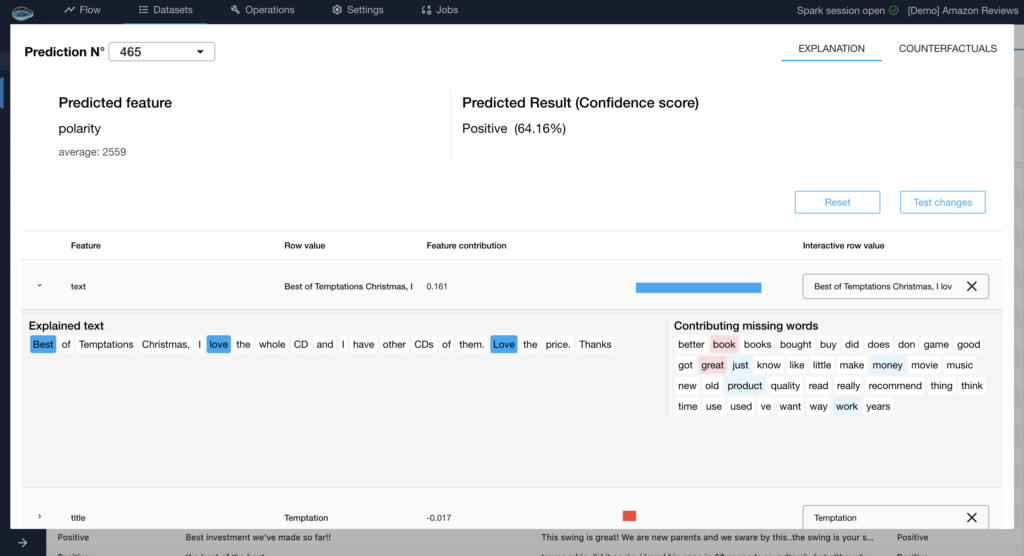
local interpretability of a classifier with feature text
3- Pattern Matching to Detect Critical Sequences and Anomalies
Recurring incidents and minor irregularities that may point to new dangers are common features of defense environments. Without computational assistance, identifying these patterns in real time is practically impossible. In this area, papAI’s pattern-matching skills shine, identifying crucial event sequences and emphasizing departures from typical behaviors.
In order to find patterns or sequences that might precede incidents, this system examines both historical and real-time data streams. For instance, it can spot unusual troop movements that deviate from conventional operational protocols or recognize a recurring pattern of cyber infiltration attempts that escalate. To keep an eye out for particular situations, analysts can utilise papAI’s pre-built models or create their own patterns.
Finding outliers, those infrequent but possibly disastrous occurrences that defy established patterns, is another important function of anomaly detection. Defense teams have an early warning system thanks to this dual strategy of matching known sequences and identifying anomalies, which enables them to take action before things get out of hand.
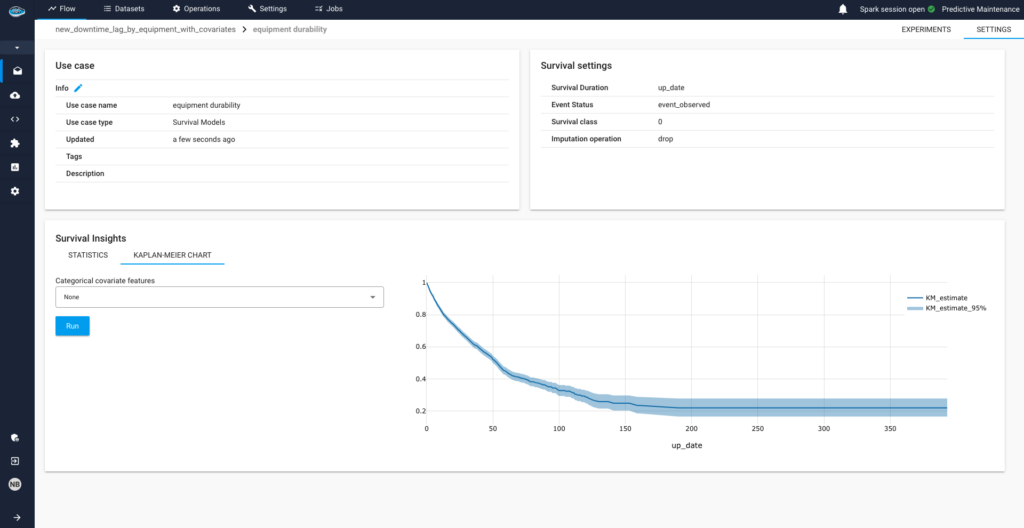
Survival Analysis for Machine Life Prediction
4- Aggregation by Entities, Locations, and Timelines
Analysts can keep track of all associated events and interactions in one location by using papAI to aggregate data around particular things, such as a unit, person, or asset. Geospatial analysis is made possible by location-based aggregation, which illustrates how incidents spread across regions or cluster geographically. On the other hand, timeline aggregation creates dynamic event sequences that show how circumstances changed over time.
When organising multi-phase operations or conducting post-event reviews, this temporal clarity is quite helpful. Defense teams can transform raw data into a cohesive, actionable operational picture by using these aggregation skills. Decision-makers can confidently and successfully allocate resources, evaluate risk levels, and spot trends when everything is organized and visualized.
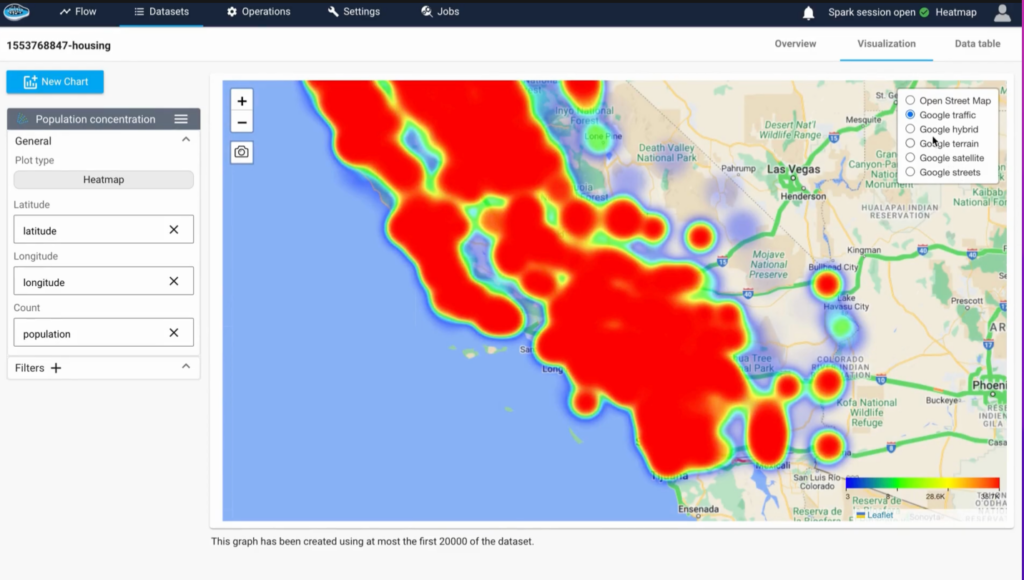
Geospatial analysis from papai
Leverage papAI's AI Capabilities for Advanced Situational Awareness Performance
Situational awareness is now mission-critical in today’s defense environment, where every second matters and data surges from innumerable sources. Military teams are better equipped to respond swiftly, coordinate efficiently, and stay ahead of new threats when they can swiftly comprehend what happened, where it happened, and why.
With the aid of advanced natural language processing (NLP), pattern identification, and collaborative workflows, papAI enables defense organisations to convert fragmented logs, reports, and operational histories into a coherent, actionable picture.
See how papAI may improve your operational intelligence and provide the necessary clarity for your teams both at the command centre and in the field. Schedule a demo now to learn how to proceed from data to decisive action more quickly, intelligently, and confidently.
Situational awareness is the capacity to see, comprehend, and predict events in your surroundings so that you can act swiftly and decisively. It involves knowing exactly “what is happening, where it’s happening, and why” at any given time in terms of defense and security.
papAI equips analysts with powerful tools to structure and analyze complex datasets. Its Natural Language Processing (NLP) modules extract key information from unstructured text like mission logs or intelligence reports. Pattern recognition highlights critical sequences and potential threats, while aggregation by entities, locations, and timelines creates a clear operational picture
Almost every level of military operations benefits, but it’s particularly valuable for command and control centers, field units, intelligence teams, and logistics commands. For C2, situational awareness enables strategic oversight and better coordination across domains. Tactical teams on the ground gain agility and can respond dynamically to unfolding threats. Intelligence units can detect patterns, anticipate adversary moves, and provide predictive insights. Meanwhile, logistics teams rely on situational clarity to maintain supply chains and operational continuity even in contested environments.
papAI stands out because of its focus on combining advanced AI technologies with sovereign governance and traceability. It doesn’t just process data; it helps analysts reconstruct critical events, score risks, and build actionable narratives from fragmented inputs. Its NLP capabilities handle multi-language and unstructured text, while its collaborative features enable real-time annotation and feedback across teams
Interested in discovering papAI?
Watch our platform in action now
AI’s Role in Translating Complex Defence Documentation
AI’s Role in Translating Complex Defence Documentation The defence sector...
Read MoreHow AI Transforms Technical Documentation in Medical Devices and Life Sciences
How AI Transforms Technical Documentation in Medical Devices and Life...
Read MoreDatategy and Alpha X Join Forces to Strengthen AI-Driven Governance Across EMEA
Datategy and Alpha X Join Forces to Strengthen AI-Driven Governance...
Read More